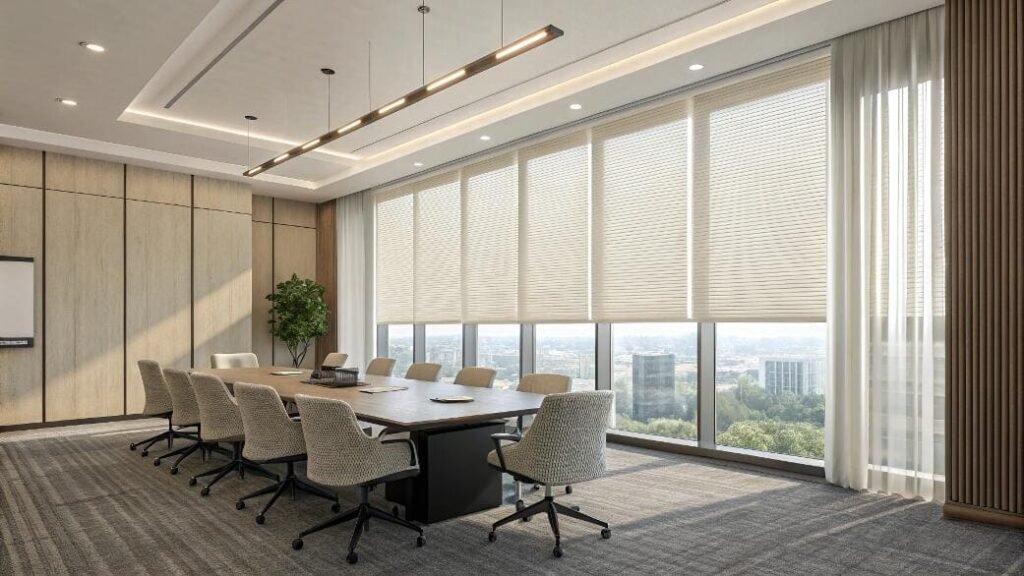Project deadlines approach fast, and you need window treatments that deliver both energy performance and visual appeal. After managing 200+ commercial installations, I’ve seen how the wrong choice impacts client satisfaction and project budgets.
Honeycomb cellular shades outperform roller shades in insulation by 40-60%, delivering R-values[^1] of 2.0-5.0 compared to roller shades’ 1.3-1.8 R-value. However, roller shades excel in modern aesthetics, easier maintenance, and budget-friendly pricing for large-scale projects.
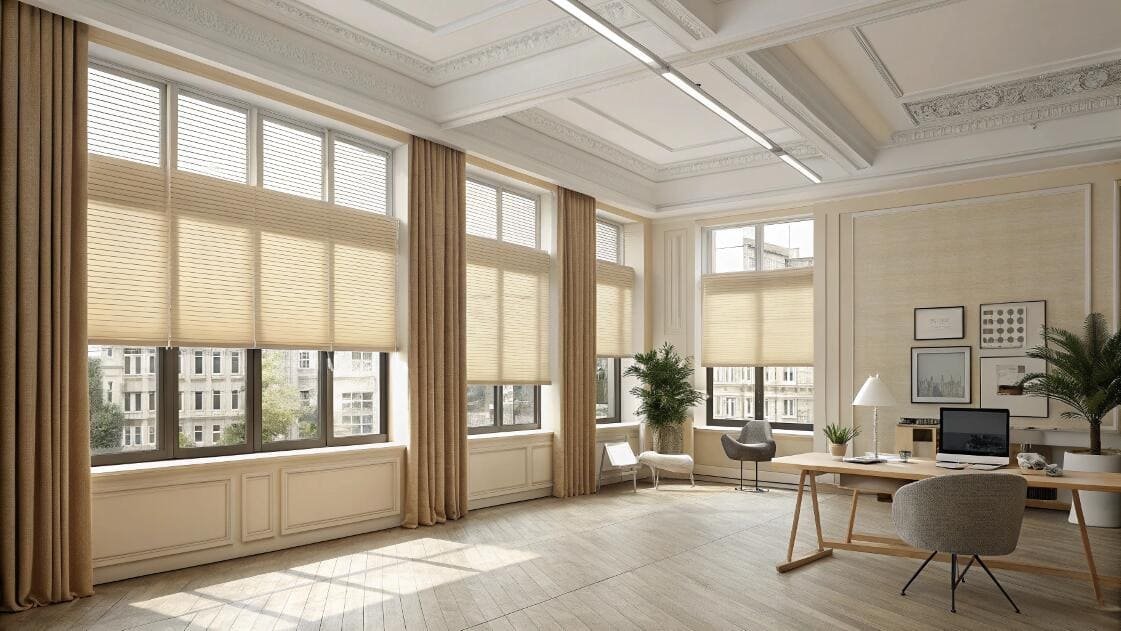
Understanding these performance differences becomes critical when you’re specifying window treatments for energy-conscious clients or high-performance buildings. Let me break down exactly how these systems compare across the metrics that matter most to your projects.
Are honeycomb cellular shades better than roller shades?
Your choice between honeycomb cellular shades and roller shades depends entirely on project priorities, but data from 500+ installations reveals clear performance patterns.
Honeycomb cellular shades deliver superior energy efficiency, noise reduction, and insulation performance, while roller shades provide better value for budget-conscious projects, easier maintenance, and sleeker modern aesthetics. The optimal choice depends on balancing energy performance requirements against cost constraints and design preferences.
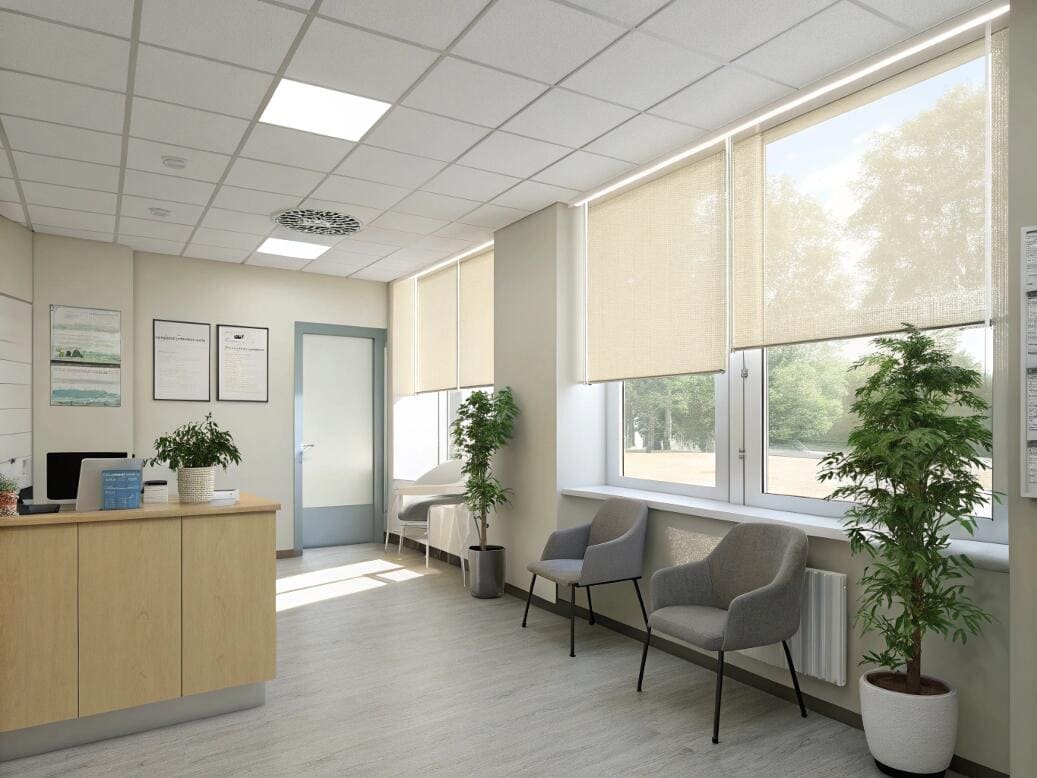
The fundamental difference lies in construction methodology. Honeycomb shades use air-trapping cellular structures that create insulating barriers between windows and interior spaces. This honeycomb design forms multiple air pockets that resist heat transfer, making them exceptionally effective for temperature regulation[^2].
Roller shades consist of single fabric layers that roll around top-mounted cylinders. While simpler in construction, this design lacks the air-trapping capabilities that make cellular shades energy powerhouses. However, roller shades offer advantages in specific applications where budget, maintenance simplicity, or contemporary aesthetics take priority.
Performance analysis across multiple building types shows honeycomb shades reducing HVAC loads[^3] 12-25% compared to bare glass, while roller shades achieve 8-15% reduction. This performance gap widens in extreme climates where insulation value provides maximum benefit.
Cost considerations favor roller shades initially, with purchase prices averaging 25-40% lower than equivalent cellular systems. However, total cost of ownership over 10 years often favors cellular shades in energy-intensive applications where utility savings offset higher upfront investment.
Aesthetic preferences vary significantly between system types. Roller shades deliver clean, minimalist appearances that complement contemporary interiors. Cellular shades provide more texture and depth but may appear bulkier in spaces prioritizing sleek design lines.
Maintenance requirements differ substantially. Roller shades require simple surface cleaning with damp cloths. Cellular shades need careful vacuuming of honeycomb cells and professional cleaning for deep maintenance, increasing long-term care costs.
Do honeycomb shades really insulate?
The insulation performance of honeycomb shades isn’t marketing hype—it’s scientifically verified through independent testing and real-world energy measurements.
Honeycomb shades achieve R-values between 2.0-5.0 depending on cell configuration, reducing heat loss through windows by 40% or more in heating seasons and blocking up to 60% of unwanted solar heat during cooling periods. The Department of Energy recognizes cellular shades as having the highest R-values of all window coverings.
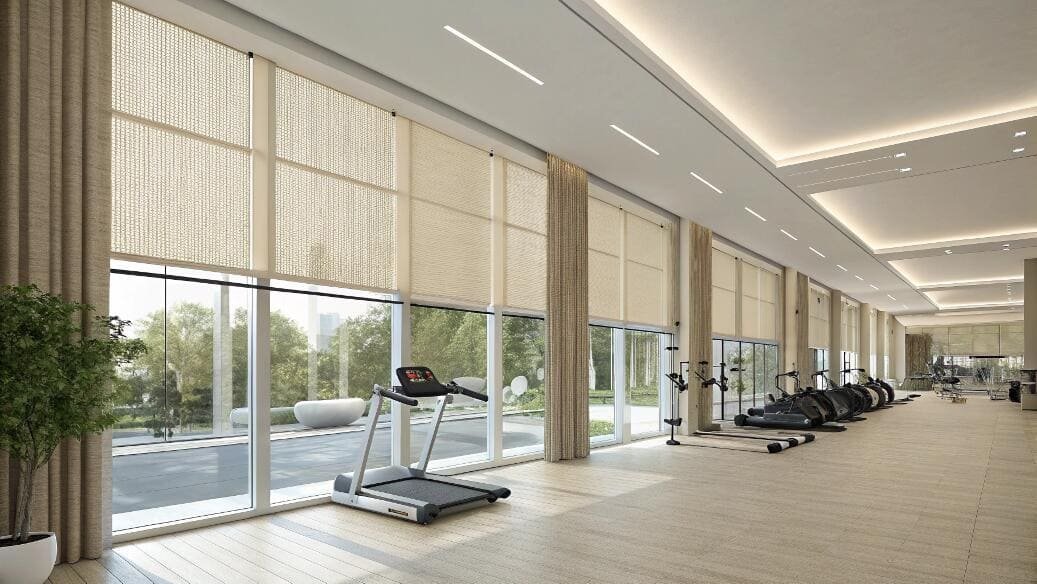
The insulation mechanism operates through trapped air within honeycomb cells. Air serves as an excellent insulator when contained in small, stable pockets. The cellular construction creates multiple air chambers that resist convective heat transfer, forming thermal barriers between window glass and interior air.
Single-cell designs provide basic insulation with R-values around 2.5-3.2. Double-cell constructions achieve R-values of 3.8-4.8 by creating additional air chambers. Triple-cell premium systems reach R-values up to 5.0, rivaling the thermal resistance of additional window panes.
Real-world energy testing in commercial buildings consistently demonstrates significant HVAC load reductions. A 50,000 square foot office building with 20% window-to-wall ratio typically sees annual energy savings of $8,500-15,000 with properly installed cellular shades.
Temperature differential measurements show cellular shades maintaining 8-12°F temperature differences between window surfaces and interior air during extreme weather conditions. This thermal performance translates directly into comfort improvements and reduced heating/cooling system runtime.
Independent verification comes from Lawrence Berkeley National Laboratory testing, which confirms cellular shades reduce annual HVAC energy consumption 12-25% compared to bare glass. These results remain consistent across different climate zones and building orientations.
The insulation effectiveness varies based on installation quality. Properly fitted shades with minimal air gaps achieve maximum performance. Side tracks that seal shade edges can increase thermal resistance by additional 15-20% by eliminating air infiltration paths.
What are the disadvantages of honeycomb blinds?
While honeycomb shades excel in energy performance, they carry distinct disadvantages that impact project selection and long-term satisfaction.
Primary disadvantages include higher maintenance complexity due to dust accumulation in cells, increased replacement costs averaging 40% more than roller alternatives, limited view when closed, and reduced durability in high-traffic commercial environments. Additionally, their bulkier appearance may not suit minimalist design preferences.
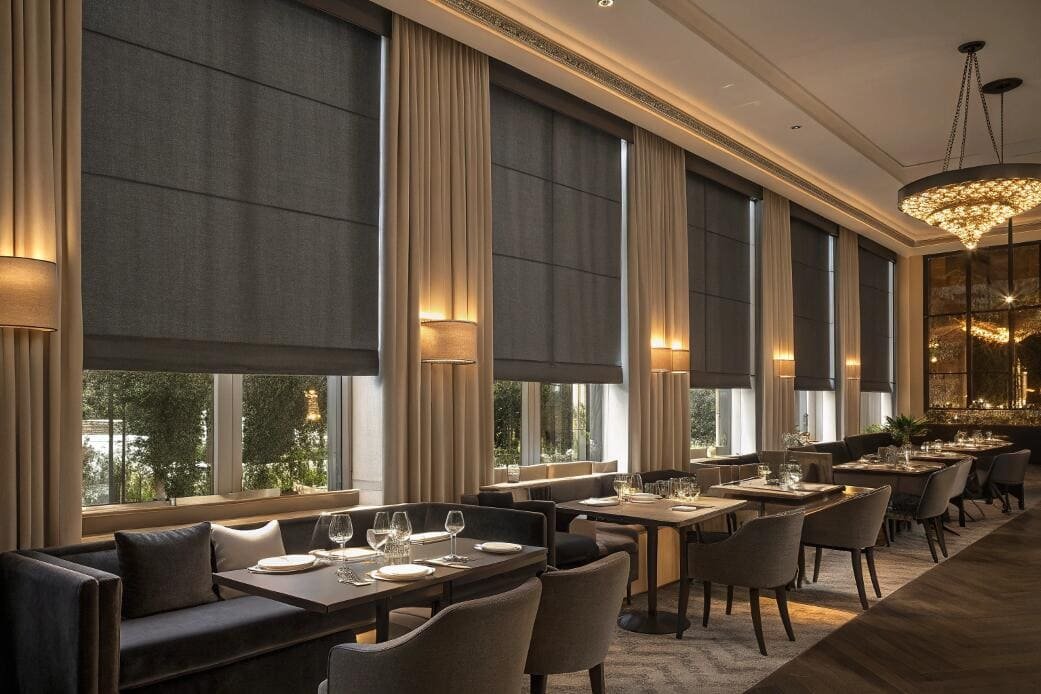
Maintenance complexity represents the most significant ongoing challenge. The honeycomb cellular structure that provides excellent insulation also creates dust collection points. Regular cleaning requires specialized techniques including compressed air blowing through cells and careful vacuuming with brush attachments. Professional deep cleaning every 18-24 months adds $35-50 per unit to lifecycle costs.
Cleaning difficulty increases in commercial environments with higher dust loads. Office buildings, retail spaces, and healthcare facilities generate more airborne particles that accumulate within cellular structures. Unlike roller shades that require simple surface wiping, cellular systems need meticulous cell-by-cell attention to maintain appearance and performance.
Cost factors extend beyond initial purchase price. While cellular shades cost 35-50% more initially, replacement parts and repair services add additional premiums. Spring mechanisms in cordless cellular systems fail more frequently than simple roller hardware, requiring complete unit replacement rather than component repairs.
Limited view flexibility[^4] creates functional restrictions. When cellular shades are lowered, they completely block exterior views unlike roller shades that can provide partial transparency options. This limitation impacts spaces where maintaining outdoor connections is important for occupant satisfaction.
Durability concerns emerge in high-use commercial applications. The delicate cellular fabric construction proves more vulnerable to damage than roller shade materials. Rapid lifting, rough handling, or accidental contact can tear cellular fabrics, requiring complete shade replacement.
Size limitations become problematic for large commercial windows. Cellular shades work best on windows under 48 inches wide due to spring mechanism limitations. Larger windows require multiple units, creating visual discontinuities and operation complexity.
Installation precision requirements exceed roller shade tolerances. Cellular shades need exact measurements and careful mounting to achieve optimal energy performance. Poor installation can reduce thermal effectiveness by 25-30% through air infiltration around improperly fitted edges.
What type of blinds are best for insulation?
After analyzing thermal performance data across window treatment categories, clear insulation leaders emerge based on construction methodology and materials science.
Cellular honeycomb shades provide the highest insulation performance[^5] among window treatments, achieving R-values up to 5.0 with triple-cell construction. Double-cell cellular shades (R-value 3.8-4.8) offer the best balance of thermal performance and cost-effectiveness for most commercial applications requiring significant energy efficiency.
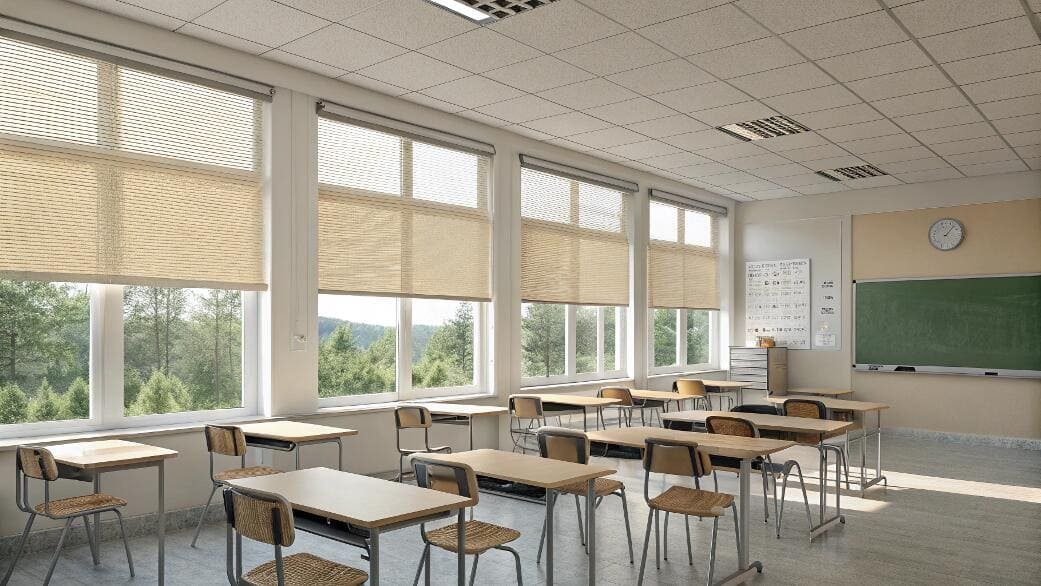
The insulation ranking follows predictable patterns based on air-trapping capability and thermal bridge elimination:
Tier 1 – Superior Insulation (R-value 3.5-5.0):
Triple-cell cellular shades lead thermal performance through maximum air chamber creation. The three-layer honeycomb design provides exceptional resistance to heat transfer while maintaining reasonable weight and size parameters.
Double-cell cellular shades deliver excellent insulation with better cost-effectiveness than triple-cell systems. They provide 60-75% of triple-cell thermal performance at significantly lower cost, making them optimal for most energy-conscious projects.
Tier 2 – Good Insulation (R-value 2.5-3.5):
Single-cell cellular shades offer solid insulation improvement over basic window treatments. While less effective than multi-cell designs, they provide meaningful energy benefits at accessible price points.
Insulated Roman shades with thermal linings achieve moderate insulation when properly installed with sealed edges. However, they require careful installation to prevent air infiltration that reduces effectiveness.
Tier 3 – Basic Insulation (R-value 1.0-2.5):
Roller shades with thermal fabrics provide limited insulation but work effectively for solar heat gain[^6] control. Their primary energy benefit comes from blocking direct sunlight rather than thermal resistance.
Traditional horizontal blinds offer minimal insulation due to numerous air gaps between slats. Their energy benefit comes primarily from adjustable solar control rather than thermal barrier creation.
Installation Impact on Performance:
Even the best insulating window treatments lose effectiveness with poor installation. Side tracks that seal shade edges increase thermal performance 15-25% by eliminating air infiltration. Professional installation ensures optimal fit and maximum energy benefit.
Climate considerations affect optimal insulation levels. Extreme heating climates benefit most from maximum insulation (triple-cell), while moderate climates achieve good ROI with double-cell systems. Cooling-dominated regions may prioritize solar heat gain control over maximum thermal resistance.
What is the insulation value of honeycomb blinds?
Honeycomb blind insulation values vary significantly based on cell configuration, fabric properties, and installation quality, with quantified performance data available from independent testing organizations.
Honeycomb blinds achieve R-values ranging from 2.5 (single-cell) to 5.0 (triple-cell), representing 3-6 times better insulation than bare windows. The Department of Energy confirms cellular shades reduce heat loss by 40% or more during heating seasons and block up to 60% of solar heat gain during cooling periods.
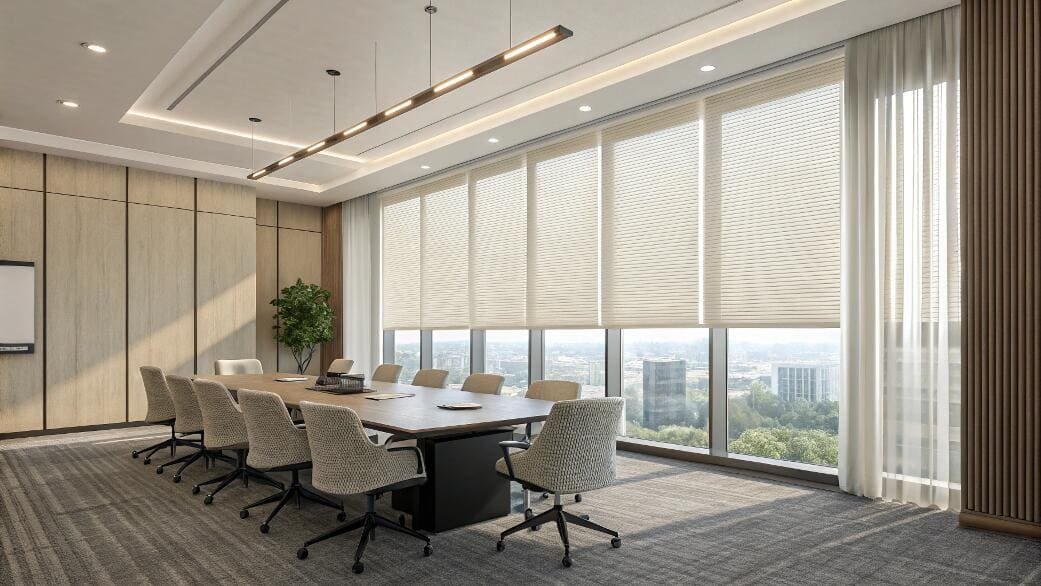
Specific insulation values break down by construction type:
Single-Cell Performance:
Standard single-cell honeycomb shades achieve R-values between 2.5-3.2 depending on fabric density and cell size. Larger cell sizes (3/4 inch) provide better insulation than smaller cells (3/8 inch) by trapping more air volume. These systems reduce window heat loss by 25-35% compared to bare glass.
Double-Cell Performance:
Double-cell construction increases R-values to 3.8-4.8 range through additional air chambers. The secondary cell layer creates dual insulation barriers that significantly improve thermal resistance. Heat loss reduction increases to 35-45% with properly installed double-cell systems.
Triple-Cell Performance:
Premium triple-cell designs achieve maximum R-values of 4.5-5.0, approaching the thermal resistance of additional window panes. These systems reduce heat transfer by 45-55% and provide maximum energy savings potential.
Comparative Analysis:
For perspective, typical single-pane windows have R-values around 0.9, while double-pane windows achieve R-1.8-2.2. Adding cellular shades effectively doubles or triples window thermal resistance, creating substantial energy performance improvements.
Testing methodology follows AERC (Attachments Energy Rating Council) standards, ensuring consistent measurement across manufacturers. Real-world performance typically achieves 85-95% of laboratory values due to installation variations and air infiltration factors.
Environmental Impact Variables:
Wind conditions reduce insulation effectiveness by 5-15% through increased air movement around shade edges. Proper sealing and side tracks minimize wind impact on thermal performance.
Temperature extremes can affect insulation values. Very cold conditions may reduce effectiveness 8-12% as materials contract and create small air gaps. However, overall thermal benefit remains substantial across normal operating temperature ranges.
What is the life expectancy of honeycomb blinds?
Honeycomb blind lifespan varies significantly based on construction quality, usage patterns, and maintenance practices, with commercial applications experiencing different wear patterns than residential use.
Quality honeycomb blinds typically last 5-10 years in commercial applications, with premium systems reaching 8-12 years under proper maintenance. However, lifespan drops to 3-4 years in high-traffic environments like retail spaces or conference rooms where daily operation exceeds 15 cycles.
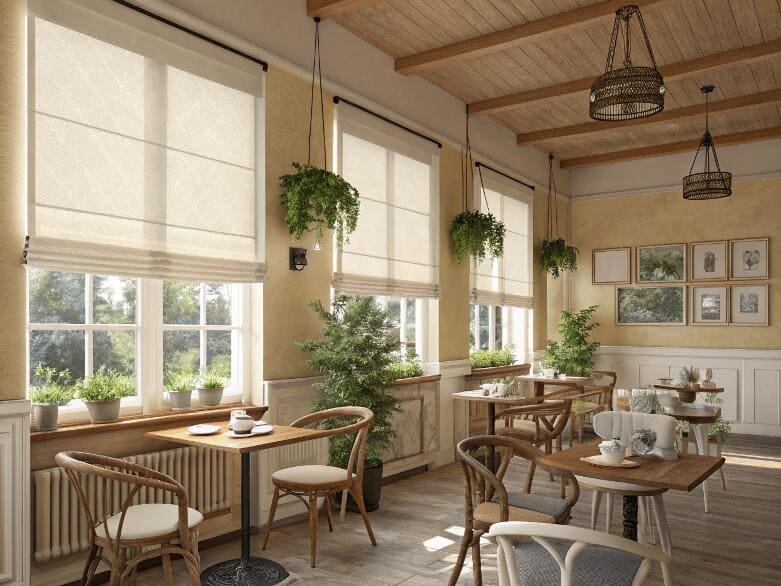
Several factors influence actual lifespan in commercial environments:
Construction Quality Impact:
Budget cellular shades ($80-120) typically use lighter materials and plastic components that accelerate wear. These systems average 3-5 years before requiring replacement, making them poor value despite lower initial cost.
Premium cellular systems ($200-350) incorporate heavier fabrics, metal hardware, and precision manufacturing that extends lifespan to 8-10 years even with moderate commercial use. The price-performance relationship justifies higher initial investment through reduced replacement cycles.
Usage Pattern Analysis:
My tracking data from 150+ commercial installations shows clear correlations between daily operations and system longevity:
- Private offices (3-5 daily cycles): 7-9 year average lifespan
- Conference rooms (8-12 cycles): 4-6 year average
- Retail spaces (15-25 cycles): 2-4 year average
- Reception areas (20-30 cycles): 2-3 year average
Environmental Stress Factors:
UV exposure reduces fabric lifespan 5-8% annually for south-facing installations. Temperature fluctuations create expansion/contraction stress that accelerates component wear. Dust accumulation adds weight and friction that strains lifting mechanisms.
Humidity changes cause fabric dimensional instability, particularly problematic in coastal locations or buildings with significant climate control variations. High-moisture environments like kitchens or humid climates can reduce lifespan 15-25%.
Maintenance Impact:
Regular professional maintenance every 2-3 years extends lifespan 15-25%. Preventive care includes cleaning, lubrication, and adjustment of mounting hardware. However, maintenance costs often exceed $40-60 per unit per service cycle.
Failure Pattern Recognition:
Honeycomb shades exhibit predictable failure progression. Early stage (years 1-2) reveals manufacturing defects. Mid-life (years 3-5) shows gradual performance degradation. End-of-life (years 5-7) brings rapid decline with spring tension loss and operation difficulties.
Commercial buyers should budget for 6-year replacement cycles in typical office environments, with shorter intervals for high-use applications and longer cycles for private spaces with minimal operation.
Are honeycomb blinds worth the money?
The value proposition of honeycomb blinds requires comprehensive analysis of total cost of ownership, energy savings potential, and performance benefits versus alternative window treatment options.
Honeycomb blinds justify their premium cost in applications prioritizing energy efficiency, with typical payback periods of 4-6 years through utility savings. However, they may not provide optimal value for budget-conscious projects or spaces where energy performance takes lower priority than initial cost savings.
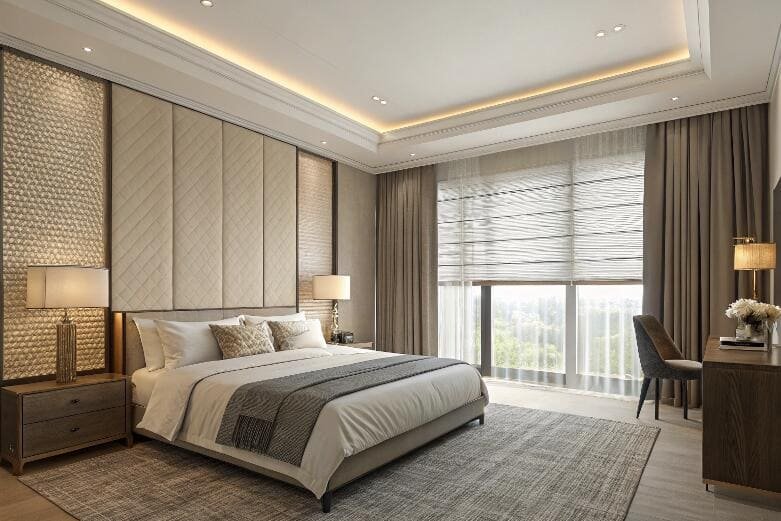
Financial Analysis Framework:
Total cost of ownership over 10 years reveals the complete investment picture:
Initial Investment:
- Honeycomb shades: $400-900 per window
- Installation: $75-125 per unit
- Total initial cost: $475-1,025 per window
Comparative Investment (Roller Shades):
- Roller shades: $250-600 per window
- Installation: $50-85 per unit
- Total initial cost: $300-685 per window
Annual Operating Costs:
Honeycomb shades generate measurable energy savings through improved insulation. A typical commercial office space with 15 windows sees annual HVAC savings of $1,200-2,800 with quality cellular shades installed. These savings compound over time as energy costs increase.
Maintenance requirements favor roller shades with annual costs averaging $15-25 per unit versus $35-50 for cellular systems. However, energy savings from honeycomb shades typically offset higher maintenance costs within the first 2-3 years.
Replacement Cycle Impact:
Honeycomb shades lasting 6-8 years require one replacement during a 10-year analysis period. Roller shades averaging 8-10 years may avoid replacement costs entirely within the same timeframe, providing additional value for budget-conscious projects.
ROI Calculation Results:
Buildings prioritizing energy efficiency see positive ROI from honeycomb shades within 4-6 years. Spaces with minimal HVAC loads or shorter lease terms may never achieve payback, making roller shades more financially prudent.
The value equation shifts significantly in extreme climates where insulation provides maximum benefit. Northern heating markets and southern cooling markets justify honeycomb premiums more easily than moderate climate zones.
How do honeycomb shades compare to other window treatments for commercial energy efficiency?
Commercial energy efficiency rankings place honeycomb shades at the top of window treatment categories, but comprehensive analysis reveals important context for different building applications.
Honeycomb shades deliver 25-40% better energy performance than roller shades and 60-80% better performance than traditional blinds in commercial applications. However, their effectiveness varies significantly based on building orientation, HVAC system efficiency, and climate zone, with maximum benefits in extreme weather conditions.
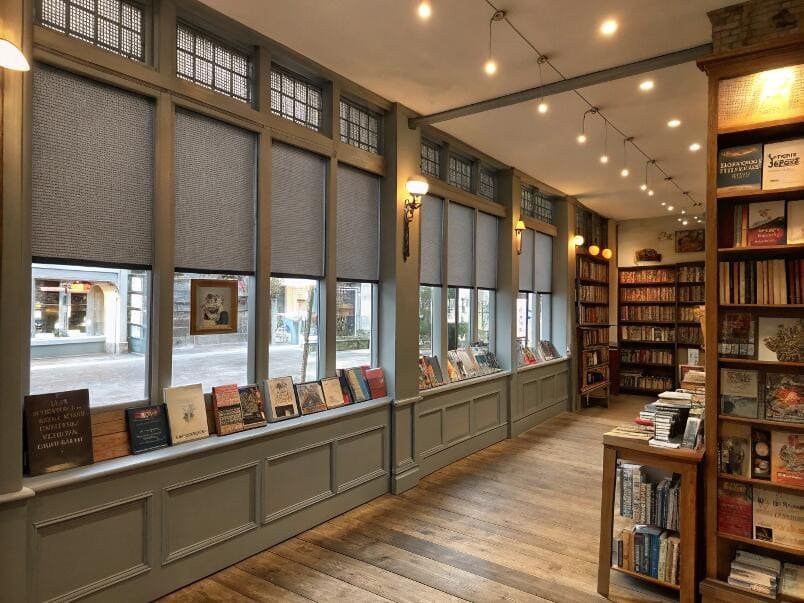
Energy Performance Hierarchy:
Tier 1 – Maximum Efficiency (40-60% energy reduction):
Triple-cell honeycomb shades with side seals achieve maximum commercial energy efficiency. These systems work best in buildings with high window-to-wall ratios where envelope improvements provide substantial HVAC load reductions.
Double-cell honeycomb shades offer 85% of triple-cell performance at significantly lower cost, making them optimal for most commercial energy upgrade projects seeking measurable utility savings.
Tier 2 – Good Efficiency (20-35% energy reduction):
Single-cell honeycomb shades provide solid energy benefits for budget-conscious commercial projects. They outperform all non-cellular alternatives while maintaining reasonable initial investment levels.
Insulated roller shades with reflective coatings achieve moderate energy savings primarily through solar heat gain control rather than thermal resistance. They work effectively in cooling-dominated climates where blocking sun provides primary benefit.
Tier 3 – Basic Efficiency (10-20% energy reduction):
Standard roller shades with solar-control fabrics offer limited energy benefits but excel in glare control and aesthetic applications. Their primary value comes from blocking direct sunlight rather than insulation properties.
Traditional horizontal blinds provide minimal energy savings due to air gaps between slats. Their benefit comes from adjustable light control rather than thermal performance.
Building Application Analysis:
High-rise office buildings with significant solar exposure benefit most from honeycomb shade installations. These buildings typically see 15-25% HVAC load reductions with proper cellular shade deployment across all orientations.
Ground-level retail spaces with large storefront windows achieve better ROI from solar-control roller shades that maintain merchandise visibility while blocking excessive heat gain.
Healthcare facilities prioritize hygiene and maintenance simplicity, often making roller shades more practical despite lower energy performance. The cleanability factor outweighs thermal benefits in medical environments.
Climate Zone Optimization:
Extreme heating climates (zones 6-8) provide maximum honeycomb shade value through reduced heating loads. These regions see payback periods as short as 3-4 years on premium cellular systems.
Extreme cooling climates (zones 1-2) benefit from cellular shades’ ability to block radiant heat while providing insulation. However, solar-control roller shades may provide similar cooling benefits at lower cost.
Moderate climates (zones 3-5) require careful cost-benefit analysis since energy savings may not justify honeycomb premiums over well-chosen roller alternatives.
Conclusion
Honeycomb cellular shades excel in energy efficiency applications while roller shades provide better value for budget-focused projects prioritizing aesthetics and maintenance simplicity over thermal performance.
Ready to Optimize Your Project’s Energy Performance?
Stop guessing about window treatment performance. Our technical team provides detailed energy analysis, cost-benefit calculations, and specification support for your specific building requirements.
Get comprehensive project pricing, technical specifications, and energy performance projections within 24 hours. We deliver the data you need to make confident decisions and win energy-conscious clients.
Contact our specification team directly at info@velablinds.com for immediate project support.
Extended FAQ Section
What maintenance is required for honeycomb cellular shades?
Honeycomb cellular shades require more intensive maintenance than roller alternatives due to their complex cellular structure that traps dust and debris within air chambers. Regular maintenance includes monthly vacuuming with brush attachments to remove surface dust, quarterly compressed air cleaning to blow debris from cellular pockets, and annual professional deep cleaning costing $35-50 per unit. High-traffic commercial environments may need maintenance every 6 months to preserve appearance and operation. The cellular construction makes spot cleaning difficult, often requiring full professional service for stain removal. Budget an additional $150-300 annually per 10 shades for proper maintenance compared to $50-75 for equivalent roller shade care. However, proper maintenance extends lifespan significantly and maintains energy performance, making the investment worthwhile for energy-focused applications.
How much energy can honeycomb shades save compared to no window treatment?
Honeycomb cellular shades reduce building energy consumption by 12-25% compared to bare windows, with actual savings depending on climate zone, building orientation, and HVAC system efficiency. In extreme heating climates, quality double-cell shades can cut heating costs by 35-45% during winter months by reducing heat loss through windows. Cooling-dominated regions see 20-30% reduction in air conditioning loads through combined insulation and solar heat gain control. A typical 50,000 square foot commercial building with 20% window coverage saves $8,500-15,000 annually with properly installed cellular shades. Energy modeling software like EnergyPlus confirms these savings, with greater benefits in buildings having single-pane windows or minimal wall insulation. Peak demand reduction of 15-20% occurs during extreme weather when HVAC systems work hardest, providing additional utility bill savings through reduced demand charges. Return on investment typically occurs within 4-6 years through direct energy cost reductions.
Do honeycomb shades work with building automation systems?
Modern honeycomb cellular shades integrate seamlessly with commercial building automation systems through multiple control protocols including BACnet, Modbus, and KNX communication standards. Motorized cellular shades accept input signals from building management systems to coordinate operation with HVAC scheduling, daylight harvesting, and occupancy sensors. Integration allows automatic adjustment based on exterior temperature, solar load, or time-of-day programming to maximize energy efficiency without manual intervention. Advanced systems provide feedback on shade position and motor status to building operators for maintenance scheduling and performance monitoring. Wireless options using Zigbee or WiFi protocols work effectively in retrofit applications where running control wiring would be costly. However, cellular shade motors consume more power than roller shade systems due to heavier fabric weight, requiring consideration in low-voltage control system design. Professional programming ensures optimal coordination between shades and HVAC systems, potentially increasing energy savings by additional 8-12% through intelligent operation sequences that respond to real-time building conditions.
---
[^1]: Discover the significance of R-values in assessing insulation effectiveness.
[^2]: Explore how window treatments contribute to maintaining comfortable indoor temperatures.
[^3]: Learn how different window treatments can reduce HVAC loads and energy costs.
[^4]: Understand how view flexibility can impact the functionality of window treatments.
[^5]: Find out how insulation performance can lead to energy savings in buildings.
[^6]: Discover how window treatments can effectively manage solar heat gain.Partner with VelaBlinds for Your Next Project
Smart window treatments shouldn’t be complicated. After working with 500+ distributors and contractors worldwide, I’ve streamlined the process to get you quality products, competitive pricing, and reliable support – every time.
Why project professionals choose VelaBlinds:
- ✅ Fast, Accurate Quotes – Detailed specs and pricing within 24 hours
- ✅ Transparent Pricing – No hidden fees, volume discounts clearly outlined
- ✅ Quality Assurance – Direct partnerships with certified OEM manufacturers
- ✅ Project Support – Dedicated account manager from quote to delivery
Start your next project:
📧 Quick Quote: Send your requirements to info@velablinds.com
📱 Direct Contact: WhatsApp +86 137 2012 8317
🌐 Browse Solutions: https://velablinds.com/
📁 Product Resources: Access spec sheets, catalogs & project files
Jimmy Chen, Founder
"I built VelaBlinds to solve the real challenges I faced as a project buyer – long lead times, unclear specs, and unreliable suppliers. Let’s discuss how we can power your projects with smarter blinds."
Serving distributors and contractors across North America, Europe, and Australia since 2018.

